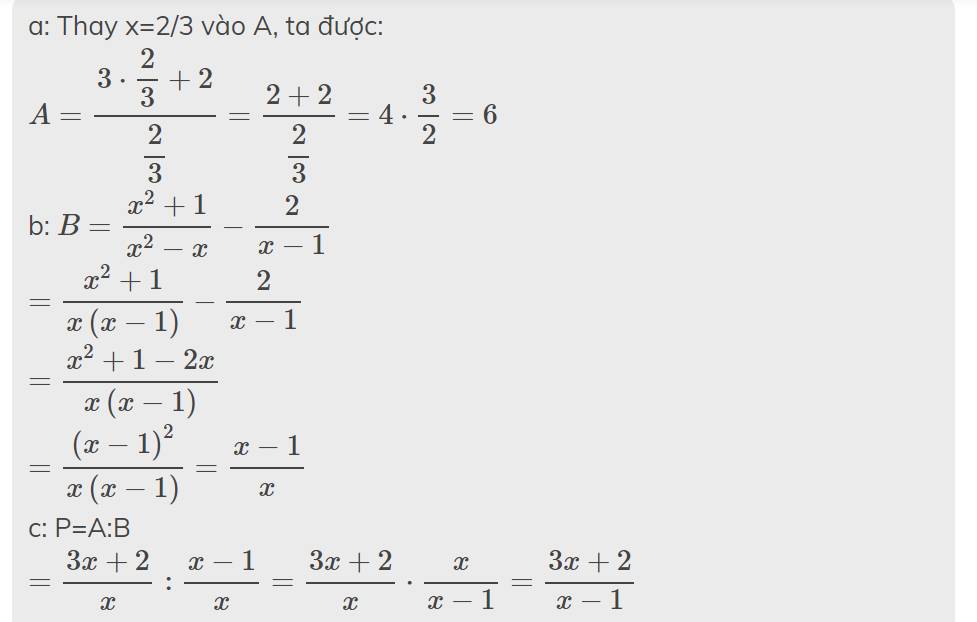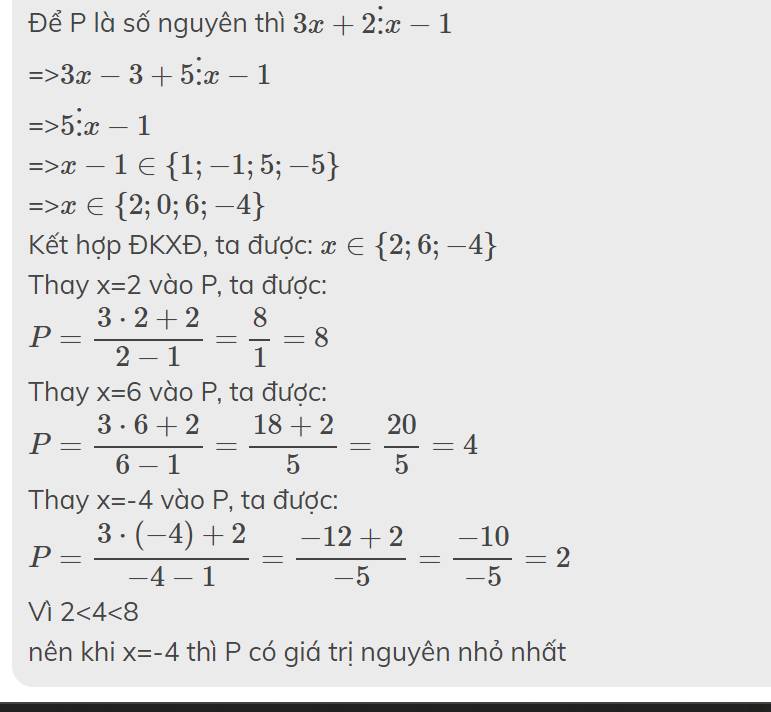Hãy nhập câu hỏi của bạn vào đây, nếu là tài khoản VIP, bạn sẽ được ưu tiên trả lời.

\(1.\)
\(-17-\left(x-3\right)^2\)
Ta có: \(\left(x-3\right)^2\ge0\)với \(\forall x\)
\(\Leftrightarrow-\left(x-3\right)^2\le0\)với \(\forall x\)
\(\Leftrightarrow17-\left(x-3\right)^2\le17\)với \(\forall x\)
Dấu '' = '' xảy ra khi:
\(\left(x-3\right)^2=0\)
\(\Leftrightarrow x-3=0\)
\(\Leftrightarrow x=3\)
Vậy \(Max=-17\)khi \(x=3\)
\(2.\)
\(A=x\left(x+1\right)+\frac{3}{2}\)
\(A=x^2+x+\frac{3}{2}\)
\(A=\left(x+\frac{1}{2}\right)^2+\frac{5}{4}\)
\(\left(x+\frac{1}{2}\right)^2+\frac{5}{4}\ge\frac{5}{4}\)với \(\forall x\)
\(\Leftrightarrow\left(x+\frac{1}{2}\right)^2+\frac{5}{4}\ge\frac{5}{4}\)với \(\forall x\)
Vậy \(Max=\frac{5}{4}\)khi \(x=\frac{-1}{2}\)

1. Đặt \(t=x^2,t\ge0\)
\(3x^4+4x^2-2\ge3.0+4.0-2=-2\)
=> MIN = -2 khi x = 0
2. \(\left(x^2+2\right)\left(x+1\right)=0\)\(\Leftrightarrow\left[\begin{array}{nghiempt}x^2+2=0\\x+1=0\end{array}\right.\)
Vì \(x^2+2\ge2>0\) => Vô nghiệm
Vậy x+1 = 0 => x = -1
3. Kết quả là 10
4. Ko rõ đề

ĐKXĐ : \(x\ne0;x\ne\pm1\)
a) Bạn ghi lại rõ đề.
b) \(B=\dfrac{x-1}{x+1}+\dfrac{3x-x^2}{x^2-1}=\dfrac{x-1}{x+1}+\dfrac{3x-x^2}{\left(x-1\right).\left(x+1\right)}\)
\(=\dfrac{\left(x-1\right)^2+3x-x^2}{\left(x-1\right).\left(x+1\right)}=\dfrac{x+1}{\left(x-1\right).\left(x+1\right)}=\dfrac{1}{x-1}\)
c) \(P=A.B=\dfrac{x^2+x-2}{x.\left(x-1\right)}=\dfrac{\left(x-1\right).\left(x+2\right)}{x\left(x-1\right)}=\dfrac{x+2}{x}=1+\dfrac{2}{x}\)
Không tồn tại Min P \(\forall x\inℝ\)

\(M=\left|3x-2\right|+\left|3x-6\right|=\left|3x-2\right|+\left|6-3x\right|\ge\left|3x-2+6-3x\right|=4\)
\(M_{min}=4\) khi \(\dfrac{3}{2}\le x\le2\)

a: Thay x=2/3 vào A, ta được:
\(A=\dfrac{3\cdot\dfrac{2}{3}+2}{\dfrac{2}{3}}=\dfrac{2+2}{\dfrac{2}{3}}=4\cdot\dfrac{3}{2}=6\)
b: \(B=\dfrac{x^2+1}{x^2-x}-\dfrac{2}{x-1}\)
\(=\dfrac{x^2+1}{x\left(x-1\right)}-\dfrac{2}{x-1}\)
\(=\dfrac{x^2+1-2x}{x\left(x-1\right)}\)
\(=\dfrac{\left(x-1\right)^2}{x\left(x-1\right)}=\dfrac{x-1}{x}\)
c: P=A:B
\(=\dfrac{3x+2}{x}:\dfrac{x-1}{x}=\dfrac{3x+2}{x}\cdot\dfrac{x}{x-1}=\dfrac{3x+2}{x-1}\)
Để P là số nguyên thì \(3x+2⋮x-1\)
=>\(3x-3+5⋮x-1\)
=>\(5⋮x-1\)
=>\(x-1\in\left\{1;-1;5;-5\right\}\)
=>\(x\in\left\{2;0;6;-4\right\}\)
Kết hợp ĐKXĐ, ta được: \(x\in\left\{2;6;-4\right\}\)
Thay x=2 vào P, ta được:
\(P=\dfrac{3\cdot2+2}{2-1}=\dfrac{8}{1}=8\)
Thay x=6 vào P, ta được:
\(P=\dfrac{3\cdot6+2}{6-1}=\dfrac{18+2}{5}=\dfrac{20}{5}=4\)
Thay x=-4 vào P, ta được:
\(P=\dfrac{3\cdot\left(-4\right)+2}{-4-1}=\dfrac{-12+2}{-5}=\dfrac{-10}{-5}=2\)
Vì 2<4<8
nên khi x=-4 thì P có giá trị nguyên nhỏ nhất


\(M=x-2\sqrt{x-3}+1=x-3-2\sqrt{x-3}+1+3=\left(\sqrt{x-3}-1\right)^2+3\ge3\)
Dấu \(=\)khi \(\sqrt{x-3}-1=0\Leftrightarrow x=4\).